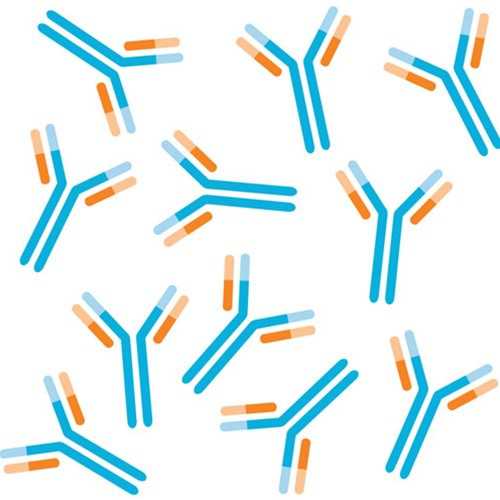Anti-LIMD2, N-terminal Antibody
This rabbit IgG polyclonal antibody was generated against recombinant LIM domain-containing protein 2 (LIMD2) protein and recognizes the N-terminus of human LIMD2.
Highlights:
- Specific for human LIMD2 (N-terminal amino acids 1-127)
- Recommended for Western Blot applications
LIMD2, is a protein overexpressed in metastatic lesions at higher levels by comparison to the matched primary tumor tissue. LIMD2 drives motility and invasion through binding directly to the kinase domain of integrin-linked kinase (ILK) and activating ILK signaling pathway. LIMD2 contains a classic LIM-domain structure.
From the laboratory of Frank J. Rauscher, III, PhD, The Wistar Institute.
 Part of The Investigator's Annexe program.
Part of The Investigator's Annexe program.
This rabbit IgG polyclonal antibody was generated against recombinant LIM domain-containing protein 2 (LIMD2) protein and recognizes the N-terminus of human LIMD2.
Highlights:
- Specific for human LIMD2 (N-terminal amino acids 1-127)
- Recommended for Western Blot applications
LIMD2, is a protein overexpressed in metastatic lesions at higher levels by comparison to the matched primary tumor tissue. LIMD2 drives motility and invasion through binding directly to the kinase domain of integrin-linked kinase (ILK) and activating ILK signaling pathway. LIMD2 contains a classic LIM-domain structure.
From the laboratory of Frank J. Rauscher, III, PhD, The Wistar Institute.
 Part of The Investigator's Annexe program.
Part of The Investigator's Annexe program.
Specifications
| Product Type: | Antibody |
| Antigen: | LIMD2 |
| Accession ID: | Q9BT23 |
| Molecular Weight: | 14 kDa |
| Isotype: | IgG |
| Clonality: | Polyclonal |
| Reactivity: | Human |
| Immunogen: | Recombinant LIMD2 |
| Species Immunized: | Rabbit |
| Epitope: | N-terminus amino acids 1-127 of human LIMD2 |
| Purification Method: | Affinity purified |
| Buffer: | BSA/sodium azide |
| Tested Applications: | WB (1:1000) |
| Concentration: | 0.75 mg/mL |
| Storage: | -20C, avoid freeze thaw cycles |
| Shipped: | Cold packs |
Provider
From the laboratory of Frank J. Rauscher, III, PhD, The Wistar Institute.
References
- Peng H, Talebzadeh-Farrooji M, Osborne MJ, Prokop JW, McDonald PC, Karar J, Hou Z, He M, Kebebew E, Orntoft T, Herlyn M, Caton AJ, Fredericks W, Malkowicz B, Paterno CS, Carolin AS, Speicher DW, Skordalakes E, Huang Q, Dedhar S, Borden KL, Rauscher FJ 3rd. LIMD2 is a small LIM-only protein overexpressed in metastatic lesions that regulates cell motility and tumor progression by directly binding to and activating the integrin-linked kinase. Cancer Res. 2014 Mar 1;74(5):1390-403. doi: 10.1158/0008-5472.CAN-13-1275.
If you publish research with this product, please let us know so we can cite your paper.


